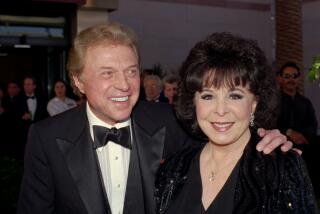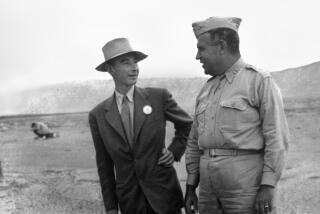Love in the works
THE danger in writing about electricity is that the metaphors can be a bit obvious. It is cause for concern, then, when a few pages into Starling Lawrenceâs âThe Lightning Keeper,â the heroine grasps the arm of the hero and experiences âa shock, as if from electricity, or as if ... touched by lightning.â Happily, in the pages that follow, the reader is not subjected to dozens of references to jolts, tingles and short circuits. Lawrence, editor in chief of W.W. Norton, has written a subtle and moving novel, an old-fashioned narrative that addresses modern questions of ethnicity and belonging. Set in a New England town between 1914 and 1919, âThe Lightning Keeperâ is a romance of technology and of the heart, but only one of those love stories turns out well.
In the ease with which it glides between the drawing room and the factory, âThe Lightning Keeperâ recalls the work of an editor-novelist of a century ago, William Dean Howells, except with a lot more sex. One can be certain that Howells never would have written, in reference to a manâs member as he bathes: â[I]t floated there in the murky water like an old cottonmouth in the bayou.â
The cottonmouth in question belongs to Toma Pekocevic, a Montenegrin Serb immigrant whose love for a woman prompts him to move from New York to Beecherâs Bridge, Conn. The woman, Harriet Bigelow, loves him in return, but the match is imperiled by Tomaâs poverty and swarthy Balkan skin. The townâs resident U.S. senator, Fowler Truscott, emerges as his romantic rival, but the wealthy manâs suit fails to provoke in Harriet âa sense or even an intimation of joy.â
Toma signs on to oversee production at the ironworks owned by Harrietâs father, but he has broader ambitions and designs a promising electrical turbine. The senator brings the device to the attention of General Electric, and Toma, although he remains in Beecherâs Bridge, soon finds himself uneasily employed by the power brokers of Schenectady, N.Y.
Lawrence would have us believe that Toma views his turbine as a way to grow rich enough to claim Harrietâs hand, but that order of priorities is less than convincing. Toma seems most in love not with the ethereal Harriet but with the process of invention, and the novel comes alive when Lawrence leaves aside the rather conventional love story and begins describing machines. In a gorgeous sketch of the ironworksâ power system, we learn that the water wheelâs âirresistible revolutions were retailed through complex gearings and ancillary belts, faster and faster but with ever-diminishing force.â
Revolutions -- and their ever-diminishing force -- lie at the heart of this novel. Even as immigration and industrial expansion transform America early in the 20th century, the balance of power still rests with the Truscotts of the world. The ironworksâ chief mechanic, Horatio Washington, and his lover, Olivia Toussaint -- revolutionary names -- must live in the ruins of an abandoned silk mill because they are black. Like Toma, they are outcasts who have found refuge in the workings of machinery.
Machines offer a path to power, as well as a new way to be exploited. Toma worships the inventor Nikola Tesla and believes his fellow Serbâs âothernessâ kept him from earning the fortune he deserved. Chief among the conspirators against Tesla, Toma believes, is Charles Proteus Steinmetz, GEâs socialist genius and the one historical figure to be drafted here as a full-fledged character.
Steinmetz -- who also falls for Harriet, making a square of the love triangle -- wrests control of the turbine from its inventor and hands it over to GEâs engineers. As Toma works on a new project -- harvesting electricity from the sky -- he must determine whether his wealth will trump his foreignness and allow him to win Harriet, or whether, like Tesla, he will be used and tossed aside.
At one point, Horatio explains to Toma that âthe history of American enterprise was the history of tolerances.â Heâs speaking of interchangeable parts, of Springfield rifles and mass production, but the fact that Horatio is black and Toma a Serb adds another layer of meaning. In engineering or in love, this book asks, how much deviation from the norm can be tolerated? *
More to Read
Sign up for our Book Club newsletter
Get the latest news, events and more from the Los Angeles Times Book Club, and help us get L.A. reading and talking.
You may occasionally receive promotional content from the Los Angeles Times.







